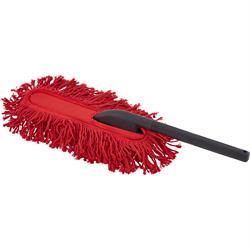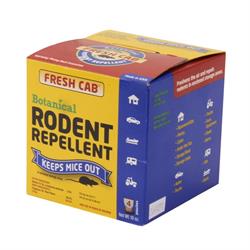Prepping for Winter
Winter Prep 101
I had the first frost of the season on my car this morning. All of us understand what that means, and none of us like it. That’s right, Old Man Winter is coming for a visit. For most of us north of the Mason Dixon Line, that means we need to put our classic away, all bundled up nice and warm, for the next few months. We all have our own little process to care for our classics over impending hibernation and here are the ones we prefer.
Location:
Depending on what you have available, there are some things to keep in mind. Concrete floors are the best option if available, however if dirt is all you have, make sure to lay down a plastic barrier between the car and the dirt. Use some scrap plywood or carpet between the tires and the dirt as well, as the moisture in the dirt can wreak havoc on your rubber. Try to avoid temperature fluctuations, this can create condensation.
Exterior:
Give your classic a good wash and wax. Make sure to hit the tires and other rubber with a good water-repellent protectant. If you have any exposed unpainted metal, you should do the same to it, perhaps with some WD-40 or something similar. Have a car duster close by for when you get to your storage location, you can use it to knock any road dust off before putting the cover on.
Interior:
Make sure to give the car a thorough vacuuming and shampooing to clean out any crumbs, dirt or anything else that may attract unwanted visitors. Leave a FreshCab Rodent Repellent pouch in the vehicle to persuade the more determined vermin to look elsewhere. If you have leather seats, use a good conditioner and protectant like Aero Appearance Products Leather & Vinyl Conditioner. Find a quality interior wax to use on the dash and remaining surfaces to prevent drying and cracking, nothing is worse than waking your car up after the winter to find a nice healthy split in the dash. Also, get some baking soda boxes or Nature's Air Odor Sponge and place them on the floorboards to help control the moisture levels and combat odors.
Engine:
First off, change the oil and filter. Then, test your antifreeze. If you are storing your car in a cold location, you’ll want to be sure the coolant is up to the task; otherwise you may be in for a rude awakening. Using tape or plastic bags and wire, cover any entry points into your air system. These make nice homes for rodents over the winter. If you are storing the vehicle for more than a couple months, it may not hurt to remove the spark plugs, spray some lubricant in the cylinders, and replace the plugs. Not only will this help to fight moisture, it will also (hopefully) keep your rings from seizing up. You'll also want to either attach a battery tender, or pull the battery entirely and store it somewhere relatively warm.
Fuel:
There are two schools of thought regarding your fuel system. The first thought is to add a fuel stabilizer like Lucas Fuel Stabilizer and fill the tank, and then run the car for a bit to circulate the stabilizer through the system. The theory behind this is that the more fuel that is in the tank, the less room there is for condensation to form. The second approach is the opposite: minimal fuel of the highest octane available, with an added stabilizer as well. This stems from the fact that most fuel produced today now has Ethanol added. Ethanol attracts water. The theory here is that the less fuel (with ethanol) that is in the tank, the less water will be attracted.
Suspension:
Here as well there are two schools of thought. The first advocates full elevation of the suspension by placing the car on stands such as Speedway Motors’ Racing Jack Stands, allowing the suspension components to hang down. You can leave tires on or off, it is your choice. The second idea is that you adjust your stands so the tires are just barely touching the ground. This is basically to take the load off of the tires and suspension. Either direction you choose to go, this is always a good time to look over your suspension components. You can either give them a coat of chassis black again, or at least hit them with a shot of WD-40 or the like.
A couple more things:
Make sure to tape up or cover your exhaust tail pipes. Mice tend to find the mufflers an acceptable winter dwelling. The last thing you expect when starting your car after the winter is to shoot a mouse nest, or a mouse for that matter, out of the exhaust. Also, when you are running around and sealing up things like your air intake and exhaust and such, make a list of what is where. You wouldn’t want to miss something and have it create a problem down the road, would you? Last thing, if you have a convertible, store it with the top up. This will help to fight the formation of creases in the fabric. If you have some spray-style fabric top protectant, its a good idea to use it before putting the cover on.


